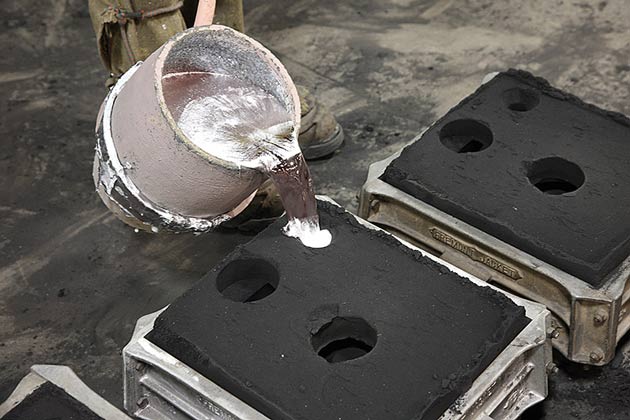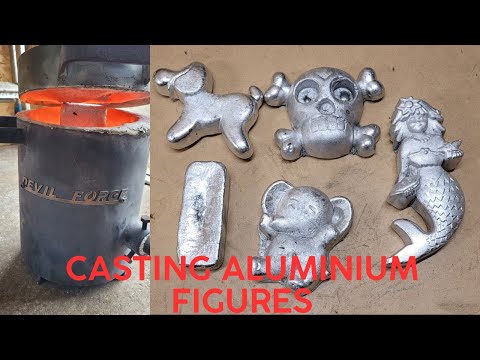The smart Trick of Stahl Specialty Company That Nobody is Discussing
The smart Trick of Stahl Specialty Company That Nobody is Discussing
Blog Article
Things about Stahl Specialty Company
Table of ContentsThe Only Guide for Stahl Specialty CompanyAn Unbiased View of Stahl Specialty CompanyThe Best Guide To Stahl Specialty CompanyThe 5-Minute Rule for Stahl Specialty CompanyThe Greatest Guide To Stahl Specialty CompanyAbout Stahl Specialty Company

If you're making a steel product, you've likely thought about using aluminum as the base material. Pure light weight aluminum has limited applications, so it is often integrated with various other aspects, such as silicon, magnesium, and manganese to develop alloys.
(AA), based in North America, has actually developed specs that control light weight aluminum alloys' composition, homes, and language. There are 2 types of aluminum alloys wrought and cast.
Fascination About Stahl Specialty Company
Cast light weight aluminum alloys are made by thawing pure aluminum and combining it with other metals while in liquid kind. The mix is poured right into a sand, die, or investment mold. After solidification, the steel is removed from its mold and mildew. At this phase, it is in either its final kind or as a billet or ingot for further handling.

160.0 represents a cast with a minimum of 99.60% light weight aluminum. The fourth number, which follows the decimal factor, specifies if the alloy is a casting (xxx. 0) or an ingot (xxx. 1). Wrought light weight aluminum alloys likewise begin by incorporating liquified light weight aluminum with other metals. In contrast to cast alloys, however, they are created into their final shape via processes such as extrusion, rolling, and bending after the metal has solidified into billets or ingots.
There are many small distinctions between functioned and cast aluminum alloys, such as that actors alloys can have extra significant amounts of other metals than wrought alloys. But one of the most noteworthy difference between these alloys is the fabrication process via which they will certainly most likely to supply the last product. In addition to some surface therapies, cast alloys will certainly exit their mold in virtually the precise strong kind wanted, whereas functioned alloys will certainly go through numerous modifications while in their solid state.
If you think that a functioned alloy might be the most effective for your project, take an appearance at several of our write-ups that discuss even more concerning certain wrought alloys, such as Alloy 6061 and Alloy 6063. On the various other hand, if you believe a cast alloy would be better for you, you can find out more regarding some cast alloys in our Alloy 380 and Alloy 383 write-ups (coming quickly).
An Unbiased View of Stahl Specialty Company
When selecting a light weight aluminum factory for your manufacturing needs, it's important to study numerous elements. One of one of the most vital facets to consider is the experience and skills of the shop. Casting Foundry. Picking a foundry who has the appropriate knowledge of the aluminum casting procedure, and the portfolio to reveal for it, helps to have a successful outcome for your job
Having the experience and sector understanding to engineer your castings for ideal production and top quality end results will streamline the project. Producing aluminum castings needs a complicated set of procedures to achieve the right results. When picking a new aluminum foundry to partner with, ensure they have comprehensive market experience and are educated concerning all facets of the light weight aluminum spreading procedure: style, manufacturing, material evaluation, and product testing.
The factory must likewise have a tested track record of delivering exceptional products that meet or go beyond customer expectations. Quality assurance must likewise be at the top of your listing when picking an aluminum factory. By collaborating with a qualified factory that complies with the standards for quality assurance, you can protect the honesty of your item and guarantee it fulfills your specifications.
By choosing a firm site who offers solutions that fulfill or surpass your product needs, you can be sure that your task will certainly be finished with the utmost accuracy and effectiveness. Various parts need various production strategies to cast light weight aluminum, such as sand casting or pass away casting.
An Unbiased View of Stahl Specialty Company
Pass away casting is the name provided to the procedure of developing intricate metal elements via use molds of the element, likewise recognized as passes away. The process uses non-ferrous metals which do not consist of iron, such as light weight aluminum, zinc and magnesium, due to the desirable residential or commercial properties of the steels such as low weight, greater conductivity, non-magnetic conductivity and resistance to deterioration.
Die spreading production is fast, making high production levels of elements simple. It generates even more parts than any various other process, with a high level of precision and repeatability. To find out more regarding die spreading and pass away casting materials utilized while doing so, kept reading. There are 3 sub-processes that drop under the classification of die casting: gravity die casting (or long-term mold and mildew casting), low-pressure die casting and high-pressure die casting.
After the purity of the alloy is tested, passes away are produced. To prepare the dies for spreading, it is essential that the passes away are tidy, so that no residue from previous manufacturings remain.
Stahl Specialty Company - An Overview
The pure steel, also called ingot, is contributed to the furnace and maintained at the molten temperature level of the metal, which is after that moved to the injection chamber and infused into the die. The pressure is after that maintained as the metal strengthens. As soon as the metal solidifies, the cooling process begins.
(https://blogfreely.net/stahlspecialc/stahl-specialty-company-is-one-of-the-largest-permanent-mold-foundries-in-the-us)
The thicker the wall of the part, the longer the cooling time as a result of the amount of indoor steel that additionally requires to cool. After the component is fully cooled down, the die cuts in half open and an ejection system pushes the component out. Following the ejection, the die is shut for the following shot cycle.
The flash is the additional material that is cast throughout the procedure. This have to be cut off utilizing a trim tool to leave just the primary component. Deburring removes the smaller items, called burrs, after the cutting process. The part is polished, or burnished, to give it a smooth coating.
Stahl Specialty Company Fundamentals Explained

Zinc is one of one of the most secondhand alloys for die spreading as a result of its reduced expense of raw materials. It's also among the more powerful and secure metals. Plus, it has superb electric and thermal conductivity. Its deterioration resistance additionally permits the parts to be lengthy enduring, and it is one of the much more castable alloys due to its reduced melting factor - Aluminum Casting.
As stated, this alloy is one of one of the most generally utilized, yet manufactures will, sometimes, pick light weight aluminum over zinc because of aluminum's production advantages. Light weight aluminum is highly affordable and one of the more functional alloys. Aluminum is made use of for a number of various products and markets anything from window structures to aerospace materials.
Report this page